APIC President Shigeie’s Official Visit to FSM & Marshall Islands
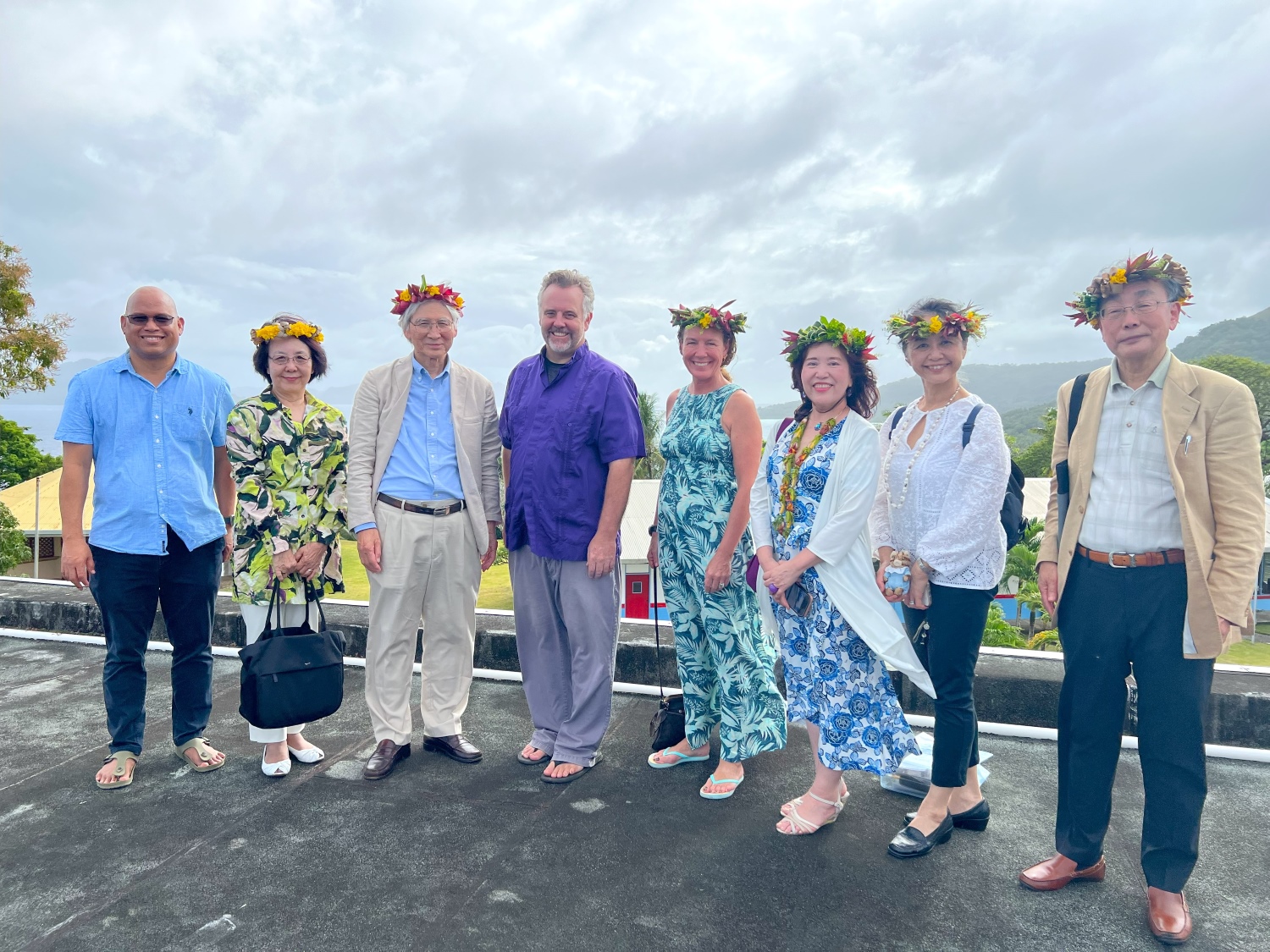
Participating group members included APIC Director Professor Kumiko Torikai, APIC Director and Secretary-General Megumi Araki, Takuma Saito of APIC, Professor Anne McDonald of Sophia University, Professor Akemi Ori, and Ms. Maki Samizo of Sophia University Alumni Association (for Micronesia visit only).
Below are the details of each visit.
Xavier High School (Chuuk, FSM)
On the afternoon of February 23rd, the group visited Xavier High School. After greeting President Fr. Kenny and Principal Carl, the entire student body gathered in the auditorium after classes ended to welcome APIC with a performance of the Alma Mater. President Shigeie gave an address, during which students exploded in rounds of applause upon hearing the names of their friends and former Xavier High School graduates who are currently studying at Sophia University. After the speech, remaining members of APIC’s group gave brief remarks, and prepared with a comeback to Xavier’s Alma Mater, Ms. Samizo and Professor Torikai sang Sophia University’s Alma Mater. Immediately after the welcome ceremony ended, a number of students came up to President Shigeie with questions regarding the Exchange Student Scholarship. A group photo was taken afterward with the student body and visiting party. APIC’s visit to Xavier High School fueled its desire to further continue the APIC-Sophia University Xavier High School Exchange Student Program.
(Note) Xavier High School is the most prestigious school in the region, boasting public figures such as FSM former President Mori and other political and economic leaders of Palau, Marshall Islands and other countries in the region as alumni. The historical connection between these northwest pacific islands and Japan is deep; campus buildings were constructed by the Japanese company Mabuchi Construction Company (HQ in Yokohama) in 1938, and a section of them served as communication facilities for the former Japanese Imperial Navy during WWII. Xavier High School is run by the Catholic Jesuit Association, which also established Sophia University.
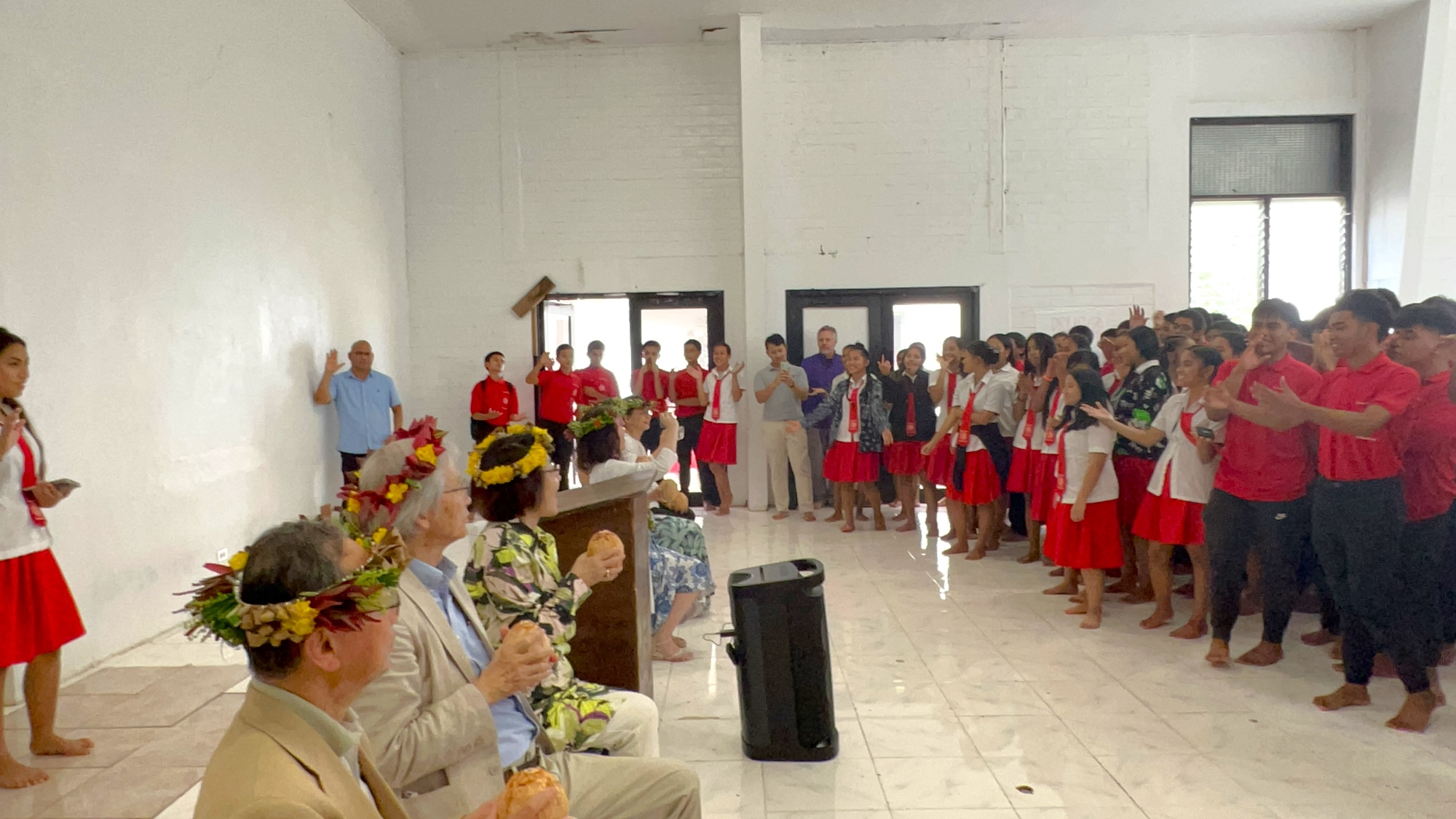
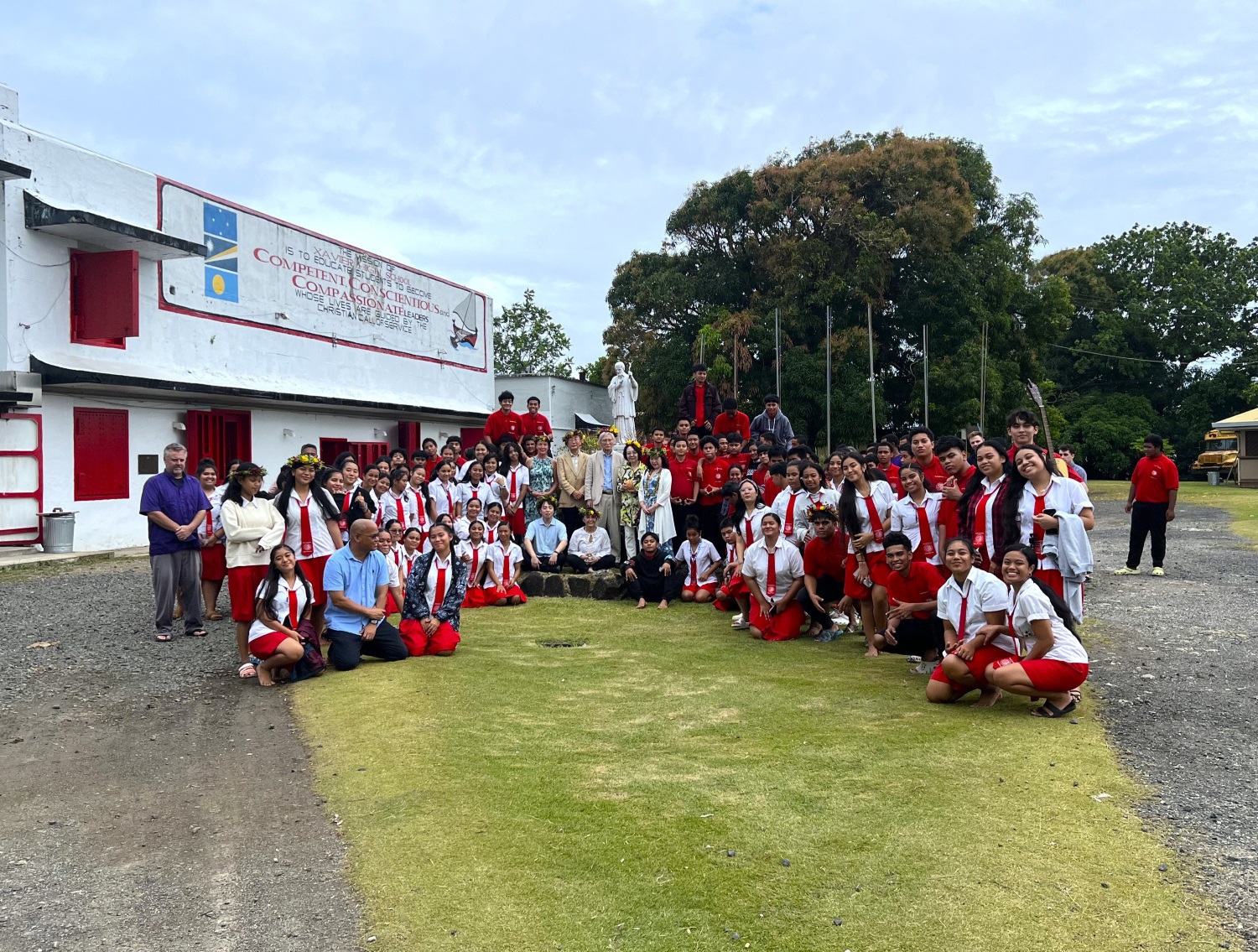
On the morning of the 24th, Kembo Mida, CEO of Chuuk Public Utility Corporation gave APIC a tour of the water tank that APIC had donated a few years previously. On the side of the 1,000-gallon tank, which is right outside the village hall, was written “APIC No. 2” (APIC donated a total of ten water tanks on the island of Weno, Chuuk) with paint. The tanks do not have filtering devices attached, but are simple contraptions that store rainwater collected off roofs, eliminating the need for filter repairs, matching the needs of the local community. The water collected in the tanks is not used for drinking but instead for cooking; when APIC visited the village, residents were using water from the tanks to prepare tuna dishes. 30 to 40 households use water from the tank, and they expressed their gratitude to the APIC. Micronesia and Marshall Islands rely entirely upon rainwater for their daily water usage, and thus the visit to the village allowed APIC to confirm the importance of the tank in the village.
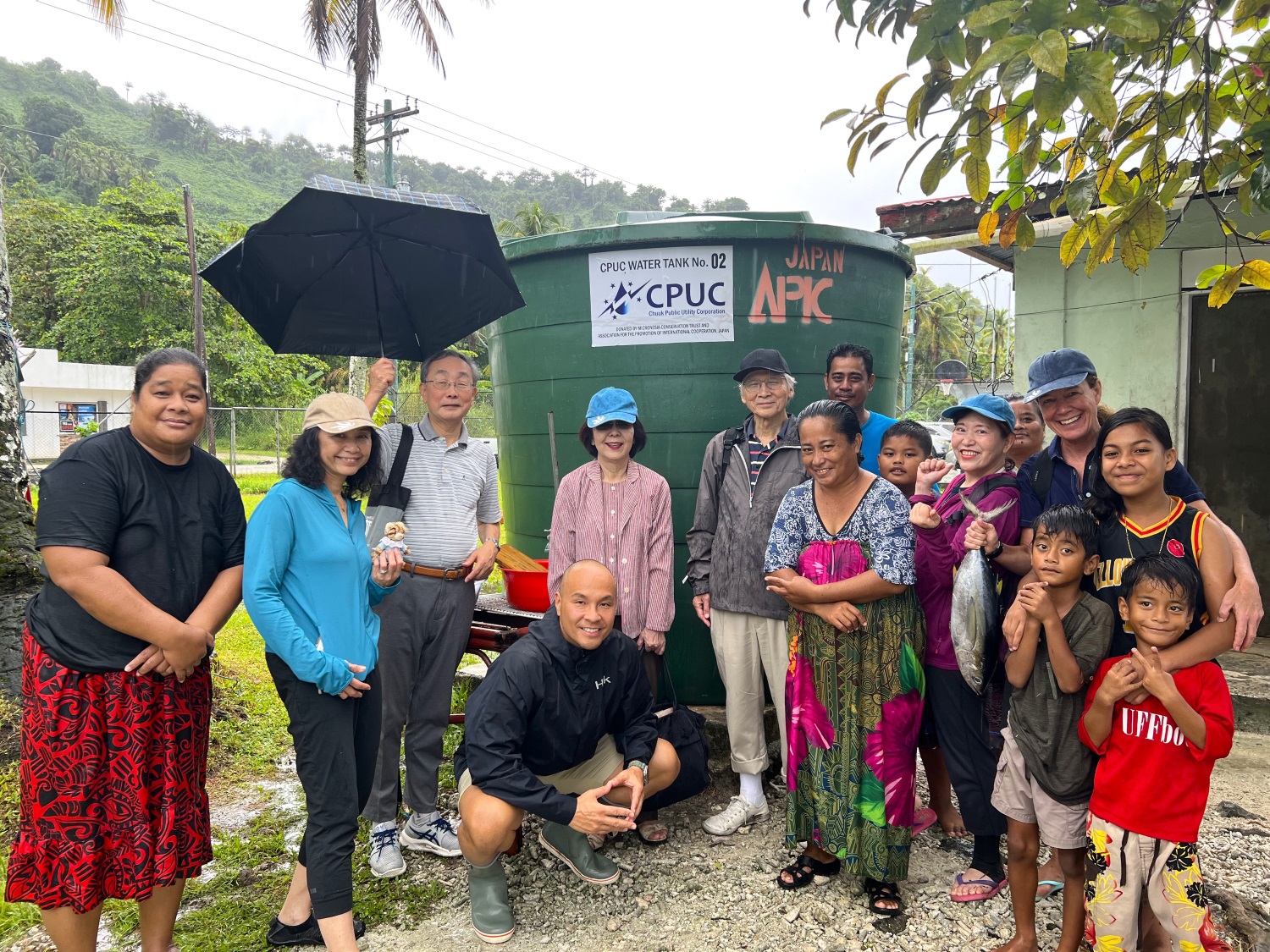
(In front of the water tank donated by APIC)
APIC organized a reunion gathering on the night of February 23rd for guests including Kembo Mida, who was also a former participant in APIC’s “Future Leaders Program”; Xavier High School Exchange students; former Minister and DCM at FSM embassy in Japan Roger Mori; and Xavier High School President Fr. Kenny. Everyone was happy to see Mary Mori, who was one of the first Xavier Exchange Students to graduate Sophia University and who now has young twins, and brought one of them with her to the event. Brad Mori and Shaniah Arnold of the APIC-MCT Graduate Exchange Student program, who had helped with preparing the Environmental Seminar that took place that day, also joined in the night’s events, talking about good memories they had and making for a successful reunion among all members.
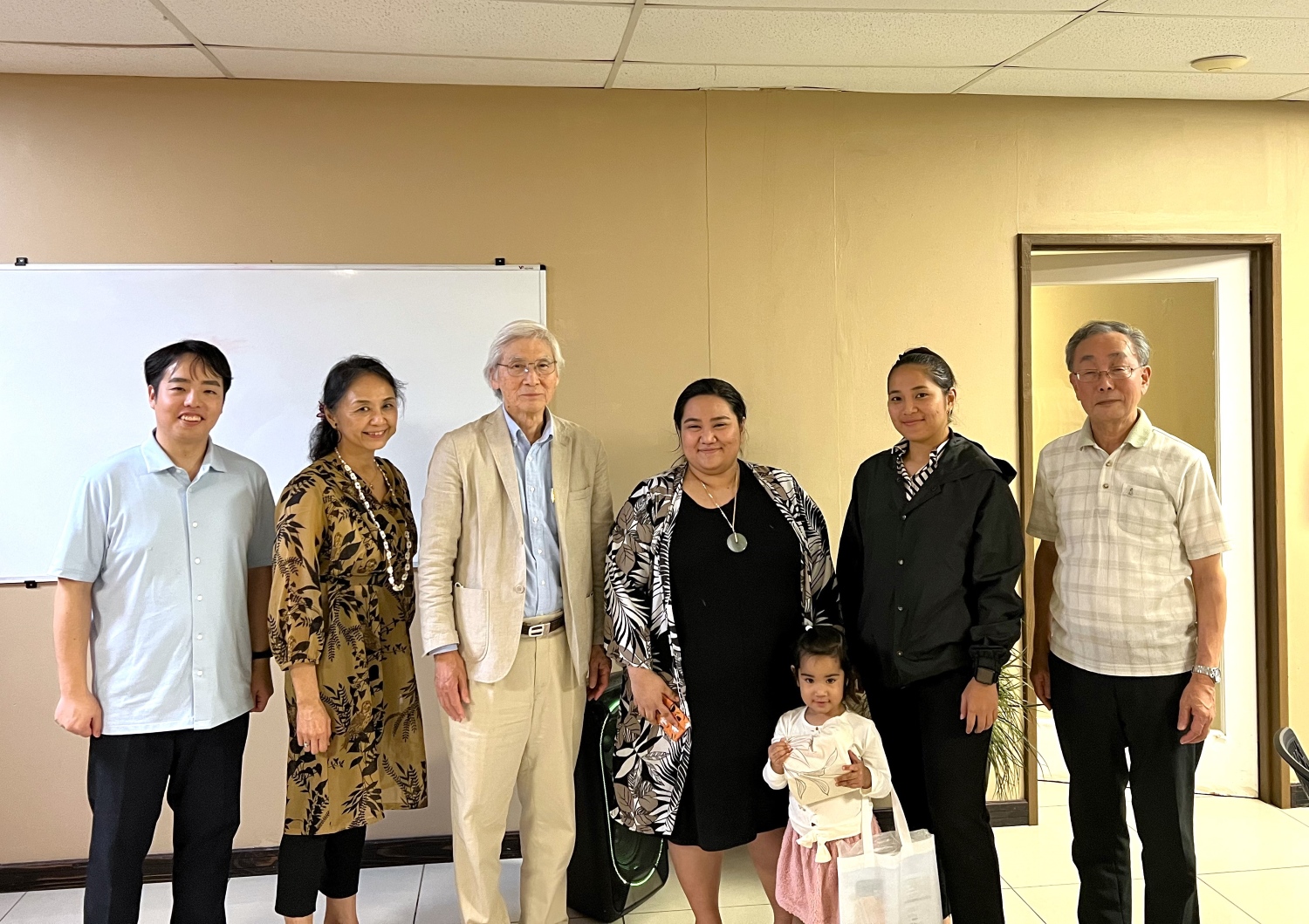
(Reuniting with Mary Mori)
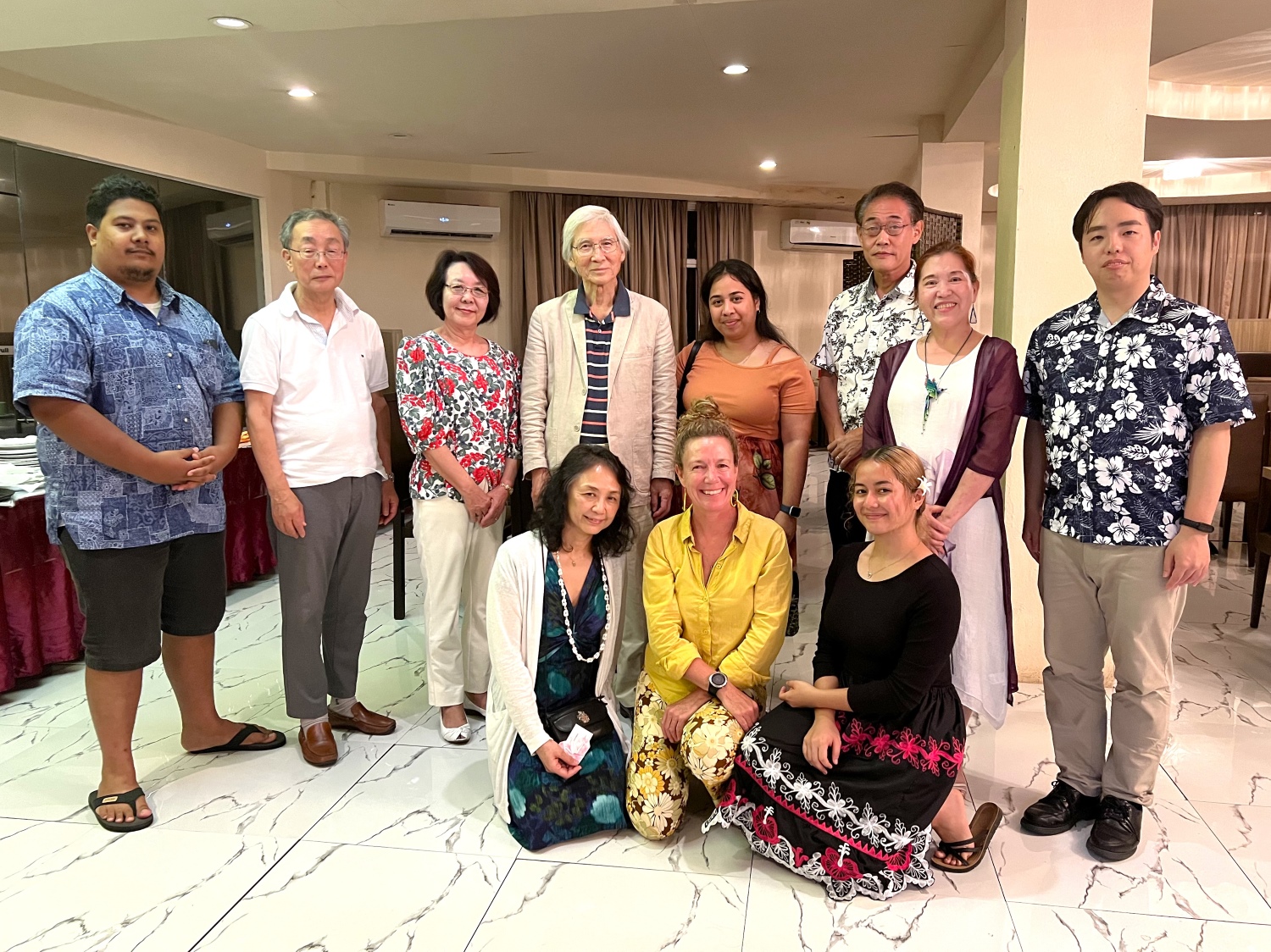
(Dinner party hosted by President Shigeie)
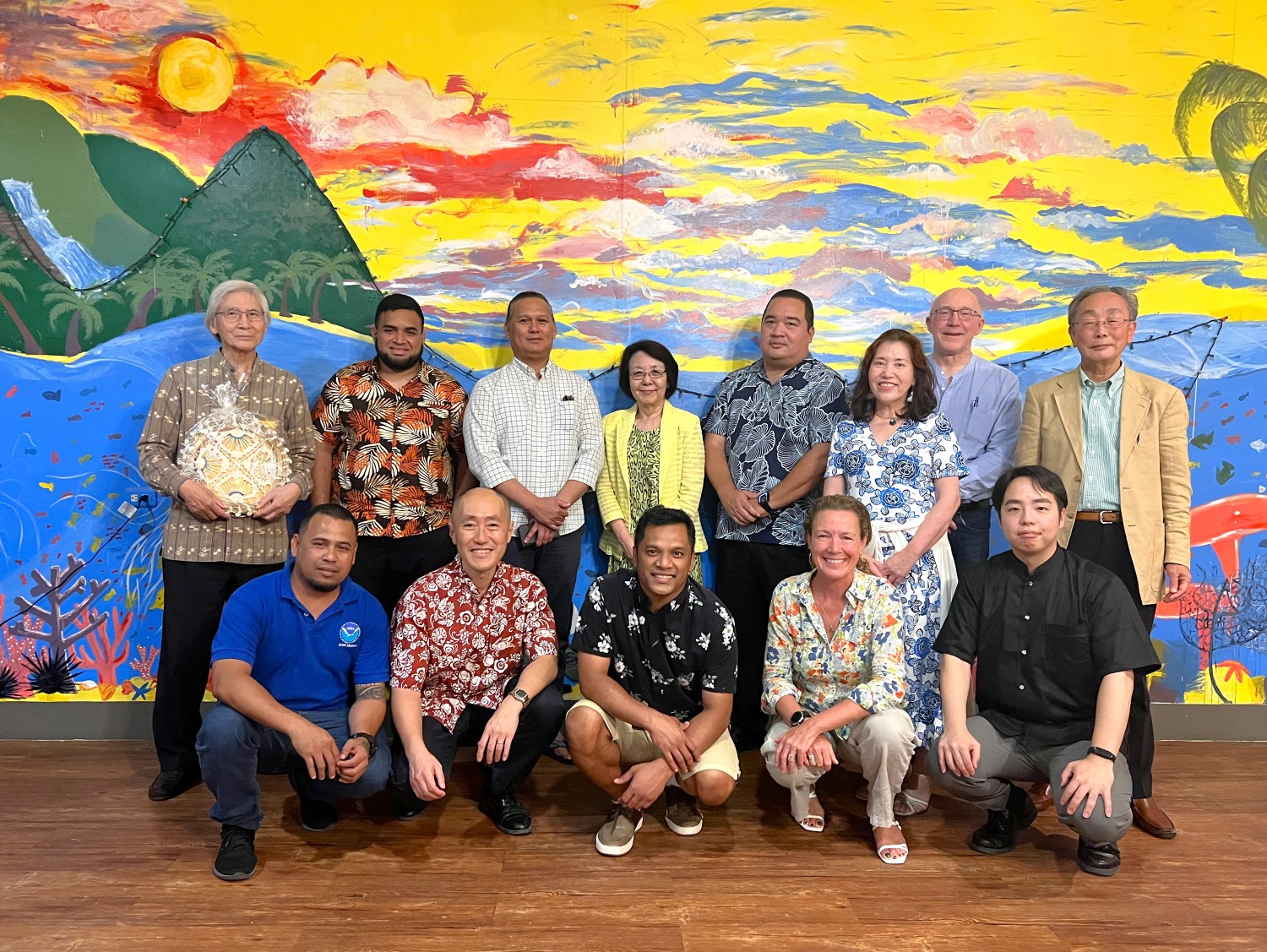
On February 27th, President Shigei and party visited Nan Madol and the Nan Madol Visitors Center. The Nan Madol Ruins were designated a UNESCO World Cultural Heritage site, and the accompanying Visitors Center was built by ODA (Overseas Development Assistance) from the Japanese Ministry of Foreign Affairs. With the cooperation of the Japanese Embassy in FSM, APIC contributed to the creation and placement of the inscription plate in front of the Center’s entrance as part of its aid towards preserving the Ruins. The group visited the Ruins and the Center during their trip to Pohnpei.
The group toured the Visitor’s Center with staff from the Japanese Embassy, and the Director of the Pohnpei State Government’s Environmental Protection Agency gave a talk to the party regarding the Visitor’s Center. Ground leveling and construction of the Center have already ended, but it has not officially opened as of this article. Inside the building on the wall is a plate installed with funding by the United States, along with a diorama of the Nan Madol Ruins in the center of the room.
(Note) The Nan Madol Ruins are a group of approximately 100 man-made islands, and are the largest ancient ruins in the Pacific region. The site was dedicated a UNESCO World Heritage site in July 2016, and simultaneously registered as an endangered World Heritage site. The key factor in this decision was the fact that the system necessary to preserve the environment of and around the Ruins was not sufficiently established, along with a lack of administrative and management systems. Apart from protecting the Ruins, the Visitor’s Center also serves as a way to control the flow and number of visitors, to train future official guides of the Ruins, and to increase awareness of the archaeological site within the local community and visitors.
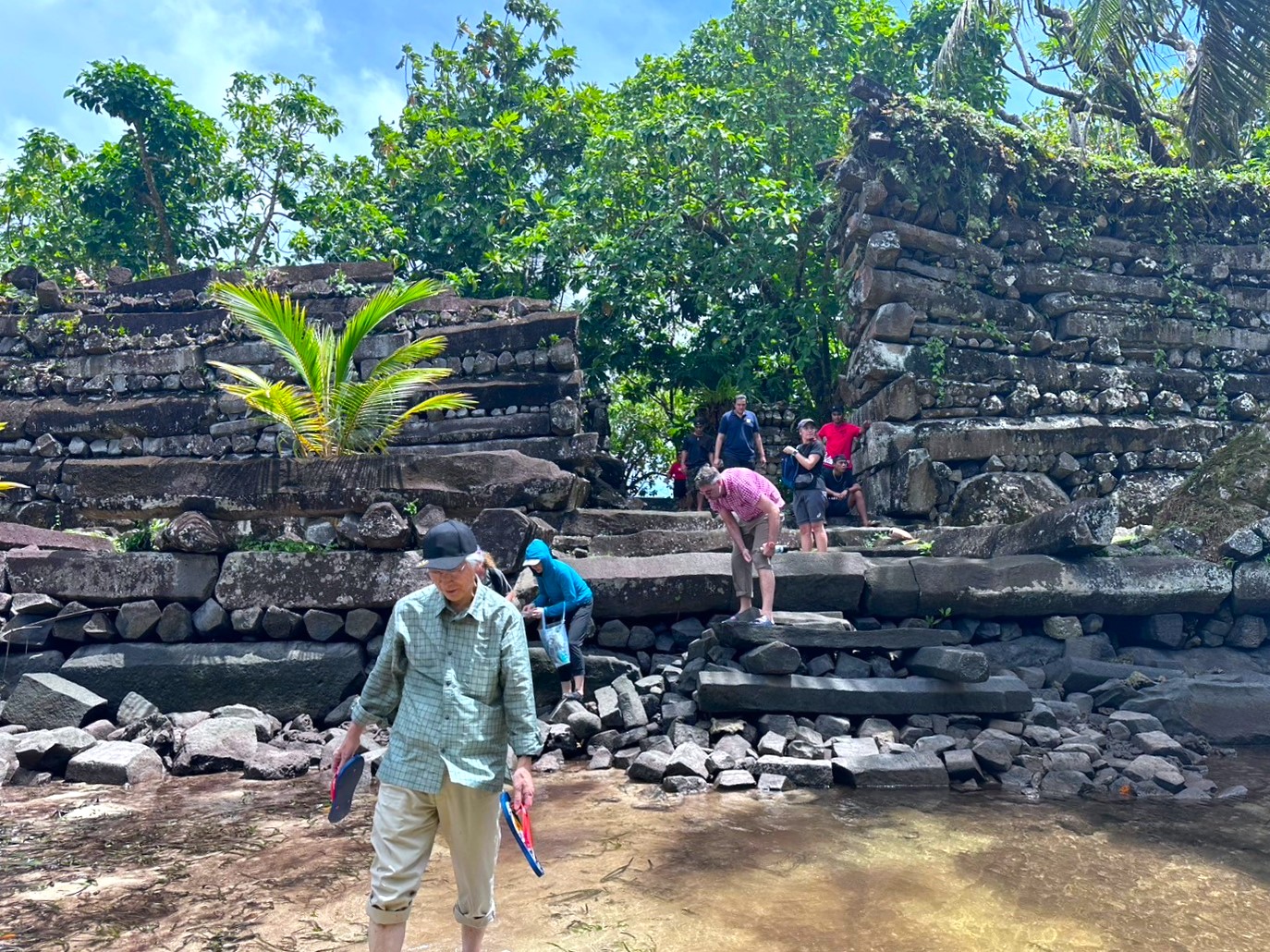
On the afternoon of the 26th, President Shigeie and party paid a courtesy call to Mr. Lorin Robert, the Secretary of Foreign Affairs of the Federated States of Micronesia. Afterward, they paid another official visit to Mr. Wesley Simina, President of the Federated States of Micronesia. Foreign Secretary Robert expressed his gratitude for APIC’s support in its projects in Micronesia; he also reflected on his involvement with establishing the FSM Embassy in Japan and his time spent in the country. Following the meeting, President Shigeie and party visited President Simina, who also showed his appreciation towards APIC’s continuous support.

(Paying a courtesy call to Secretary Robert of Foreign Affairs Department)
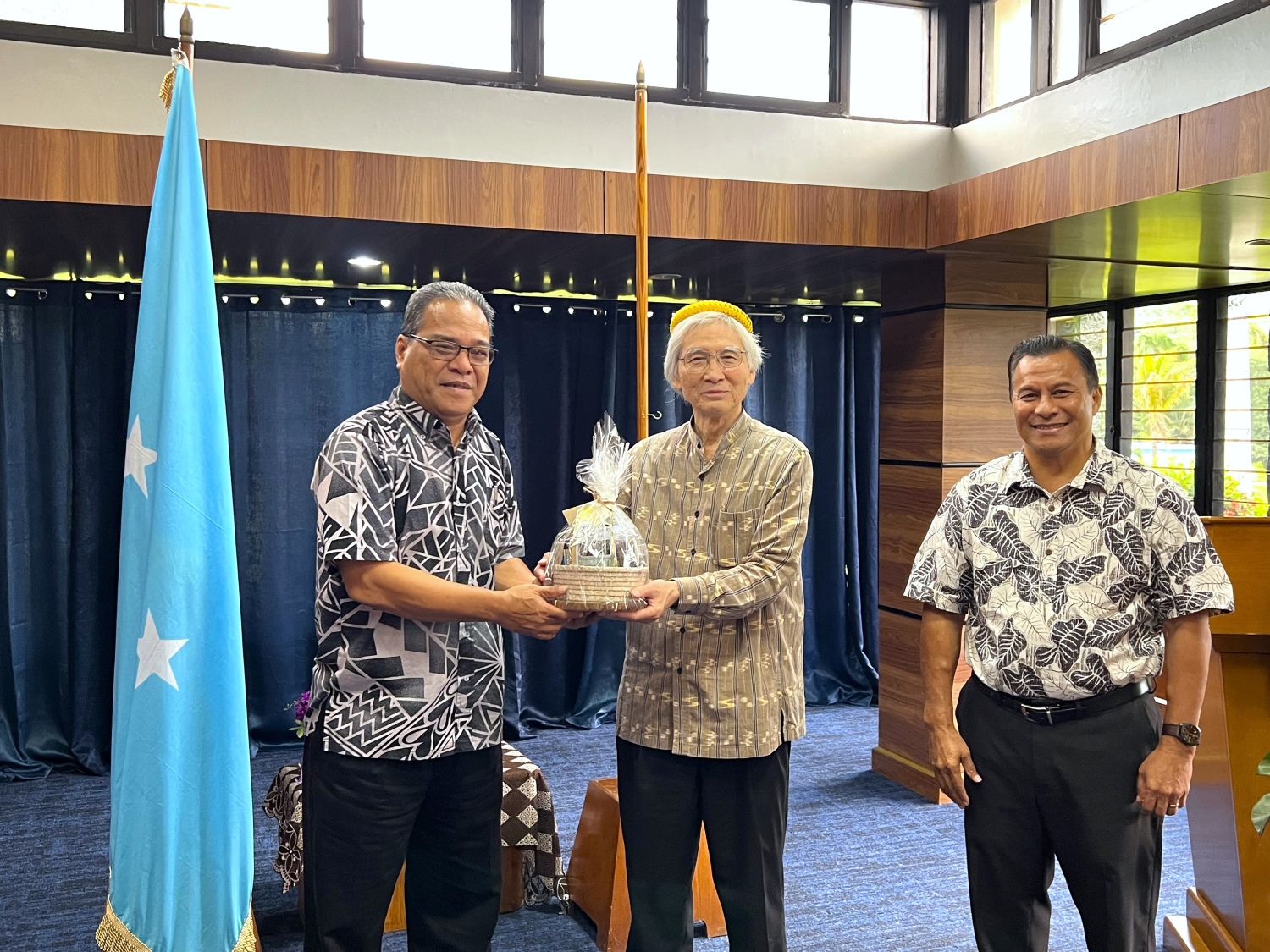
(Paying a courtesy call to President Simina of the Federated States of Micronesia)
On the 25th, President Shigeie and party visited Japanese Ambassador to Micronesia, Mr. Nobuo Kagomiya, where the group received an explanation of the current affairs of Micronesia.
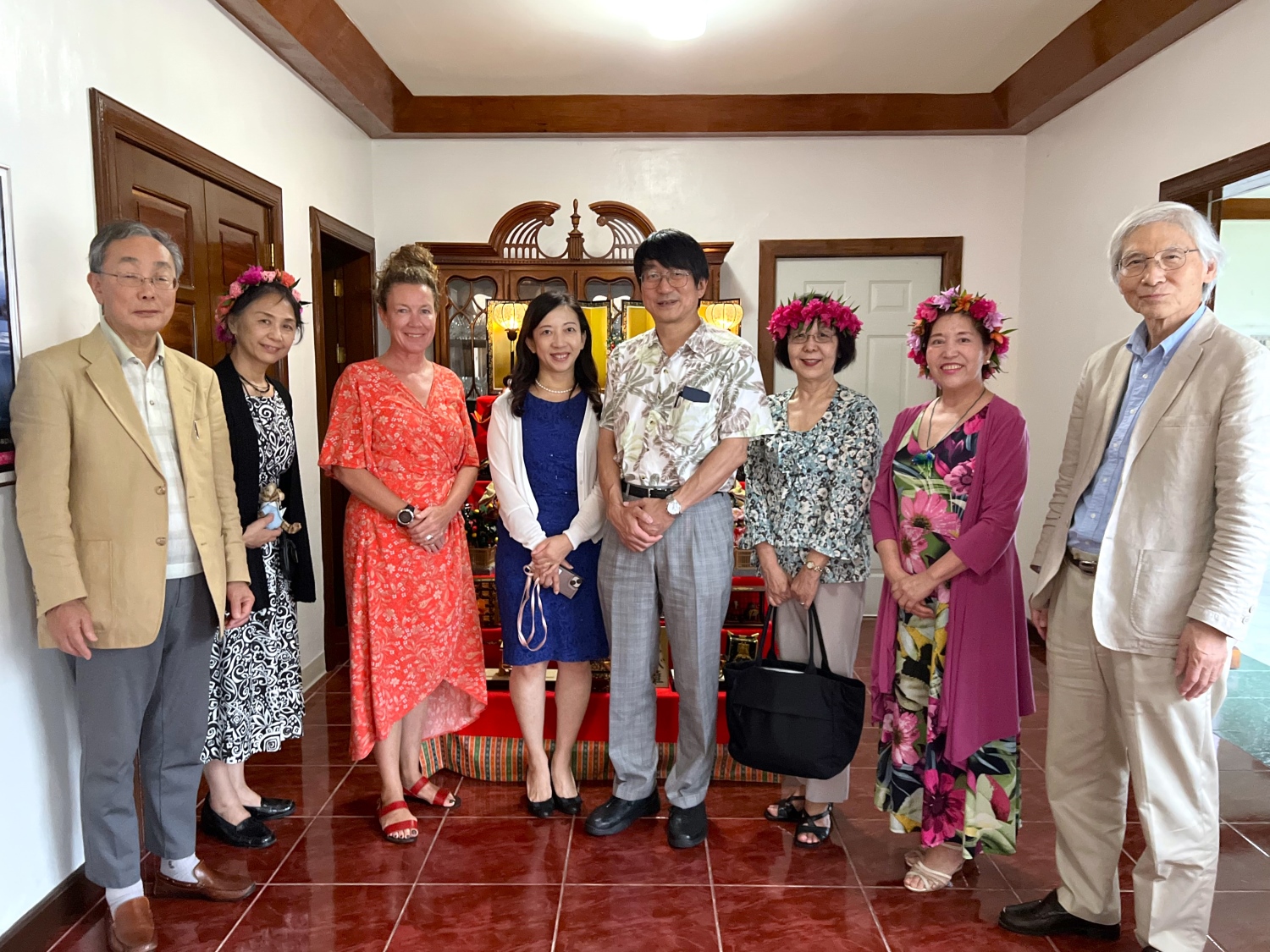
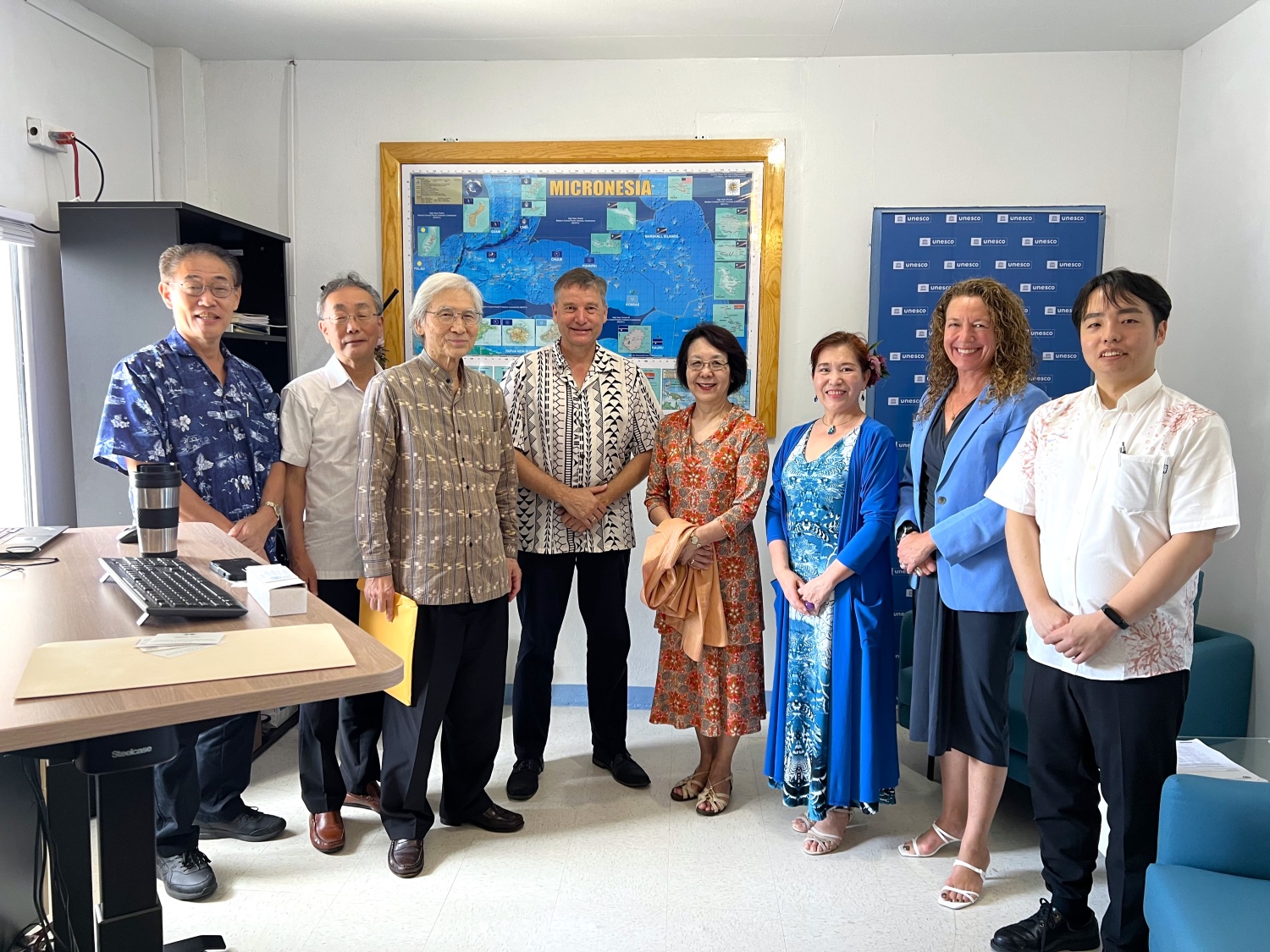
(Visiting Mr. Jaap van Hierden, UN Resident Coordinator of Micronesia)
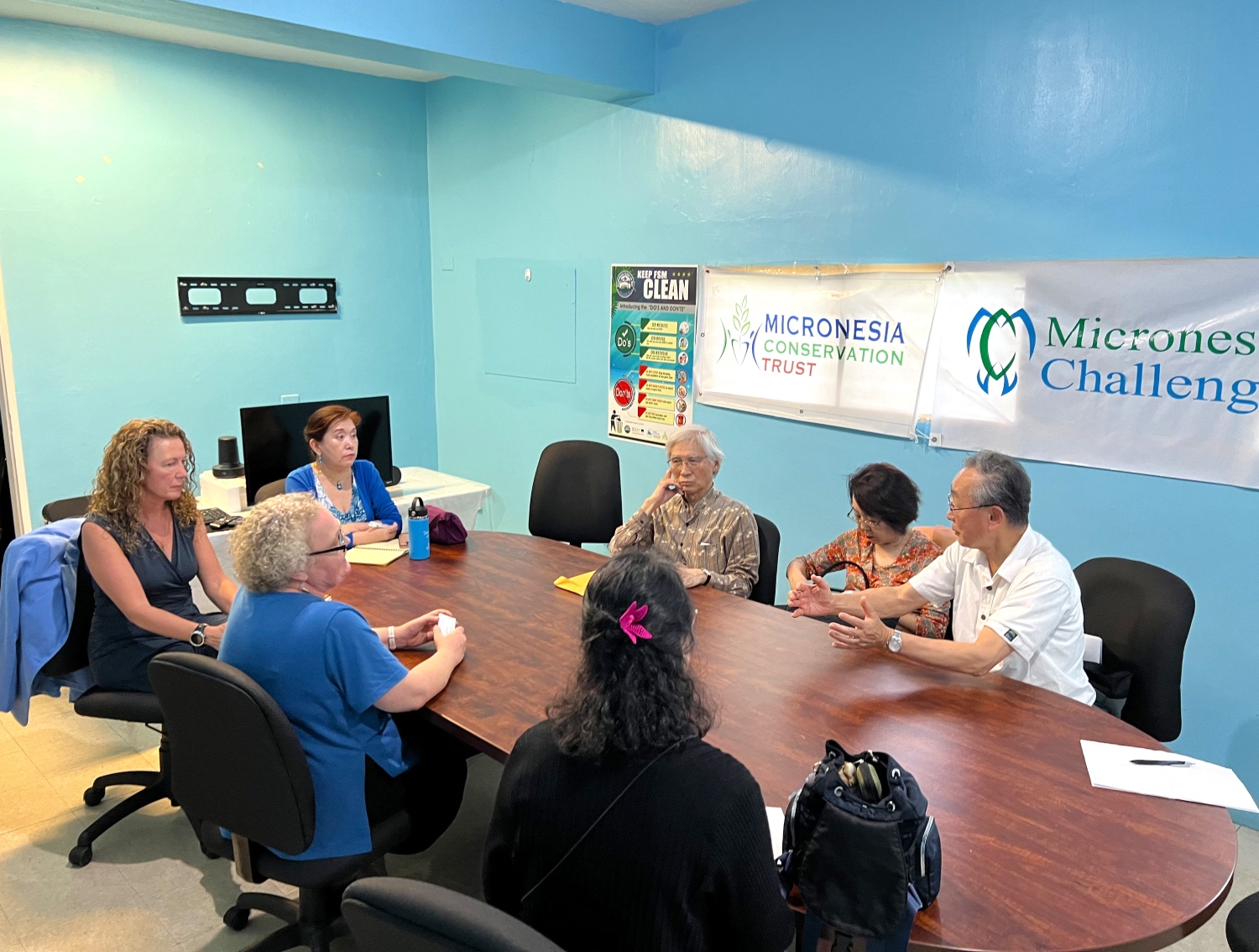
(Visiting the MCT offices)
On the afternoon of the 26th, President Shigeie and party visited COM (College of Micronesia). Unfortunately, the President and Vice-President they intended to meet were away on an overseas business trip, and thus the group met with a different Vice-President and the Dean. Every year one or two COM students participates in APIC’s Pacific & Caribbean Student Invitation Program, and when APIC mentioned that the summer program for 2024 had been finalized, the Dean announced that one student had already been picked out of ten who had applied for the chance to study in Japan.
Following this, a discussion took place regarding strengthening APIC and COM’s cooperative relationship as well as assessing the Student Invitation Program.
MIMRA (Marshall Islands Marine Resource Authority) (Majuro, Republic of Marshall Islands)
On the morning of the 29th the party had plans to pay a courtesy call to Marshall Islands President Hilda Heine; however, the President was unfortunately not feeling well in the morning and the courtesy call had to be canceled. APIC then listened to a talk at the Japanese Embassy regarding the current political economic affairs of the Marshall Islands, and in the afternoon, they visited the MIMRA (Marshall Islands Marine Resource Authority), whose offices are located in a building which was built by aid provided by the World Bank. APIC was informed how MIMRA uses the newest machines to manage its marine resources, such as tracking the movement of ships, tracking whether a ship has paid the fishing fee or not, and monitoring suspicious vessels in their territory which appear on the screen.
Additionally, as part of MIMRA’s outer islands development, it has increased the number of freight ships to neighboring atolls and buying their fish products, which are then sold in Majuro. The fish are brought to the MIMRA-run OIFUMC (Outer Islands Fish Market Center) where they are sold fresh, as well as turned into processed products such as fillet and fish balls ready for not only the general market but also to be served in school lunches and hospital meals. APIC also paid a visit to OIFMC, where a JICA-sourced management professional gave a talk to the party. One of the points he explained was there is no choice but to sell the fish caught in the outer islands at a cheaper price than those caught inside the Majuro Atoll due to loss of freshness, forcing profits to be in the red.
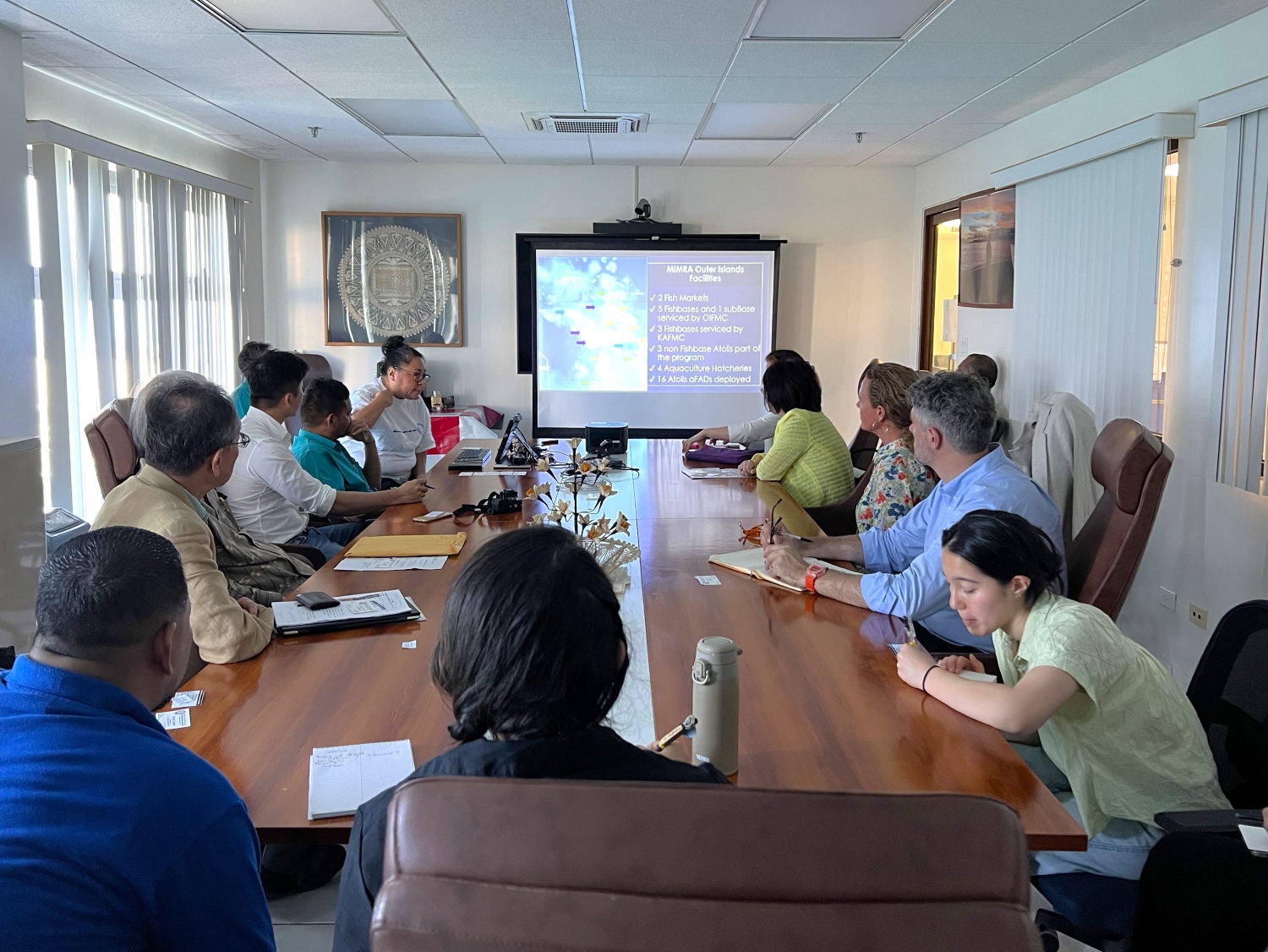
(Visiting MIMRA)
Although APIC was unable to meet with the President of COM while in Majuro, former APIC-MCT exchange student Lajkit Rufus was working for the Vice President, and using one of the college’s conference rooms, Professor McDonald and Professor Ori’s students presented a summary of their respective doctors’ and masters’ research theses, allowing the group an opportunity to take a tour of the campus. This experience will hopefully lead to smooth implementation of future APIC Pacific & Caribbean Student Invitation Programs.
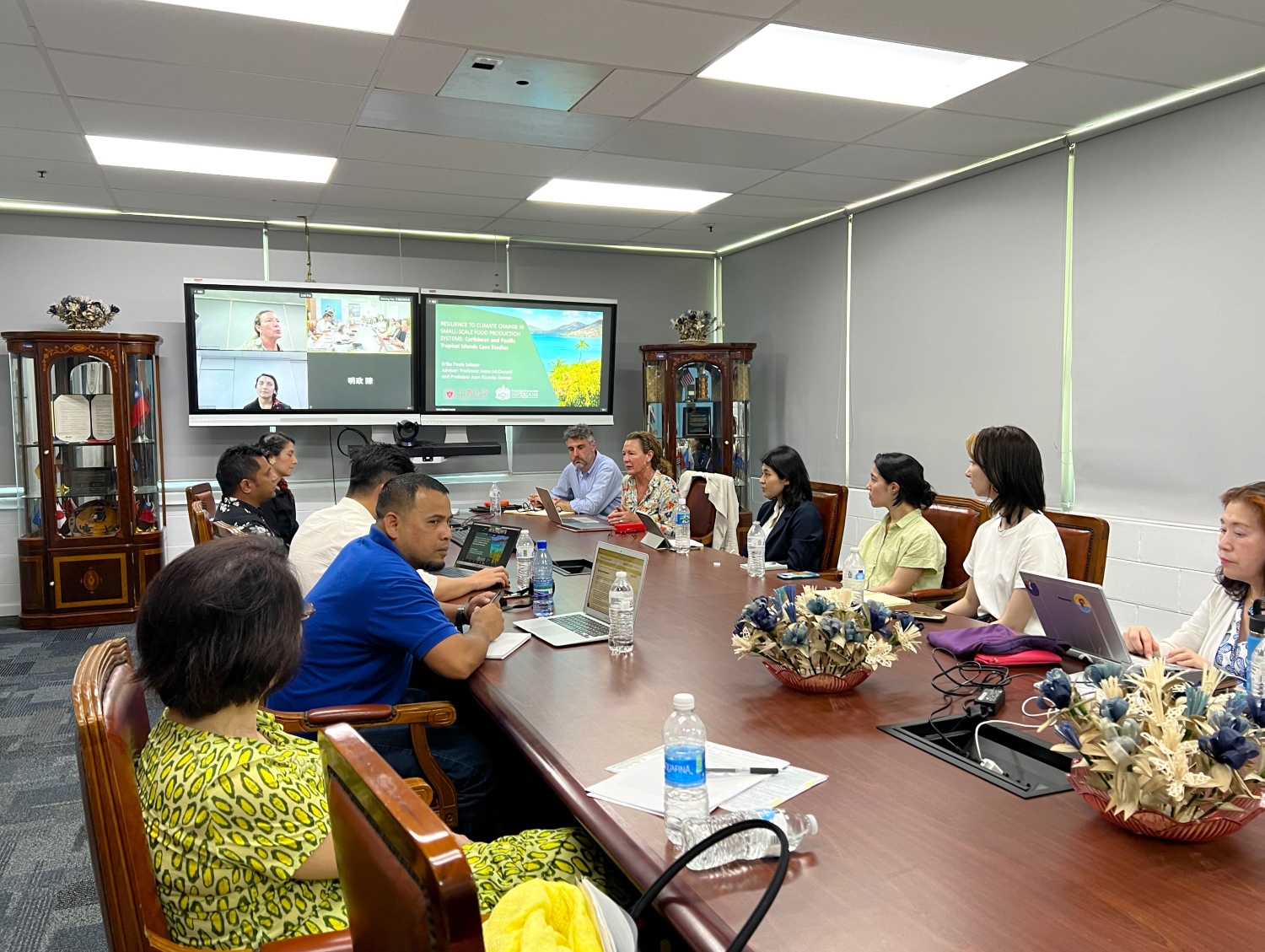
APIC’s visit on March 1st coincided with the nation’s 70th anniversary of the US hydrogen bomb test on the Bikini Atoll, which was a national holiday with a parade and a speech by the President. Subsequently, President Shigeie and party did not visit any facilities etc., and instead took a tour of the Majuro Atoll. The group visited islands inside the atoll by boat, observing the clear, clean, blue water of the protected area. In the afternoon the group visited a third of the atoll by car, including COM campus located in the south of the atoll. Sophia University students went and bought ingredients to make dinner for APIC and group, using the dormitory kitchen to prepare dinner for everyone that night.
(Note) The capital Majuro, which is the entire Majuro Atoll, is comprised of 57 small and large coral islands to create an oval shape which stretches over 100 kilometers. 50 of those 100 kilometers are connected by paved roads. Because the atoll is coral, the island at its widest is only two kilometers, and at its narrowest a mere fifteen meters, and only six meters above sea level at its highest.
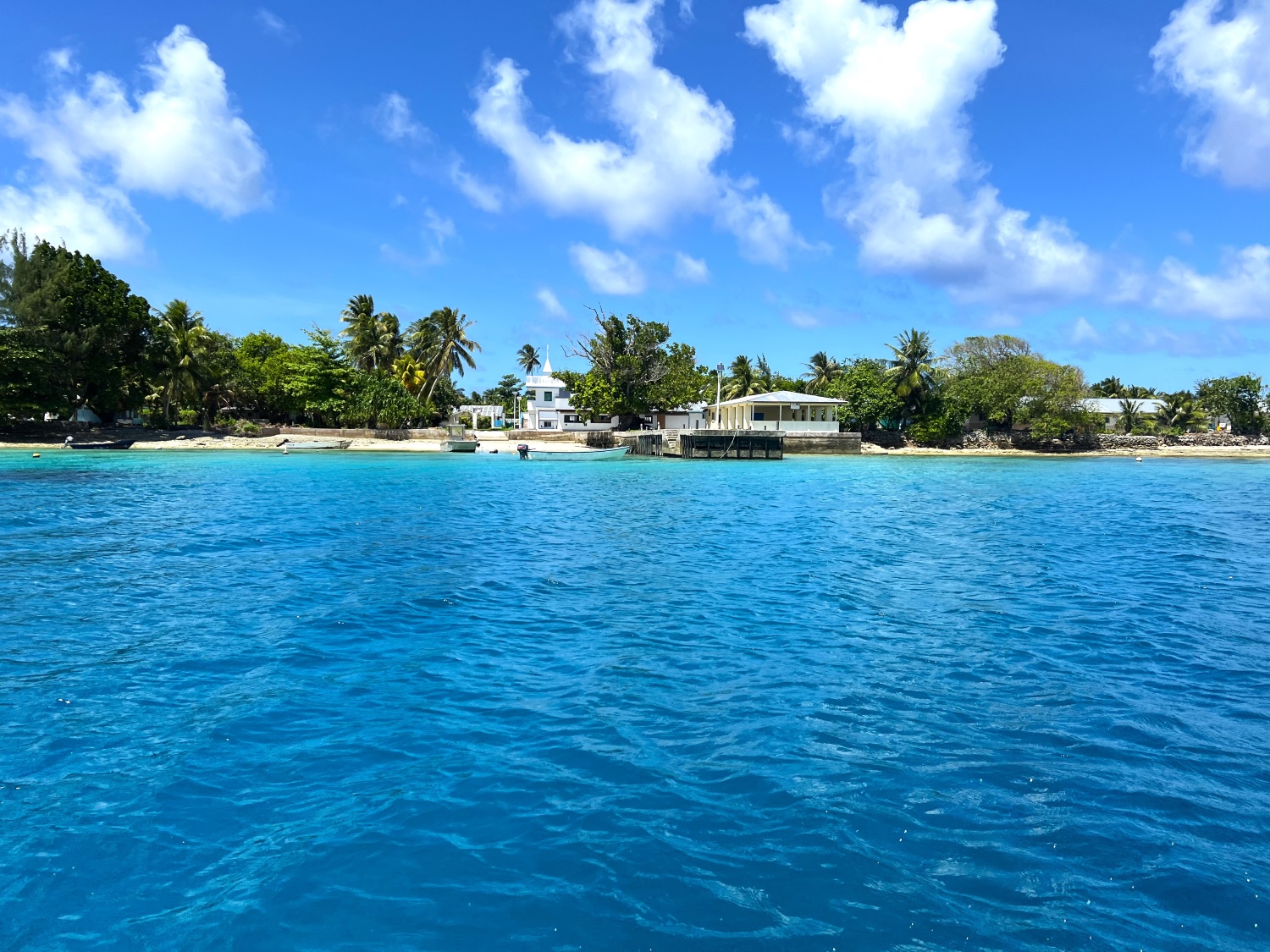
(Crossing the bay to the outer islands off the Majuro Atoll)
WHAT'S NEW
- 2024.12.4 UPDATE
PROJECTS
"Barbados A Walk Through History Part 14"
- 2024.9.17 UPDATE
PROJECTS
"Barbados A Walk Through History Part 13"
- 2024.7.30 UPDATE
EVENTS
"408th Lecture Meeting Regarding Global Issues"
- 2024.7.23 UPDATE
PROJECTS
"Barbados A Walk Through History Part 12"
- 2024.7.9 UPDATE
ABOUT
"GREETINGS FROM THE PRESIDENT JULY 2024"
- 2024.7.4 UPDATE
EVENTS
"APIC Supports 2024 Japanese Speech Contest in Jamaica"
- 2024.6.27 UPDATE
EVENTS
"407th Lecture Meeting Regarding Global Issues"
- 2024.5.21 UPDATE
EVENTS
"406th Lecture Meeting Regarding Global Issues"
- 2024.5.14 UPDATE
EVENTS
"405th Lecture Meeting Regarding Global Issues"
- 2024.4.2 UPDATE
PROJECTS
"Water Tanks Donated to Island of Wonei, Chuuk, FSM"




